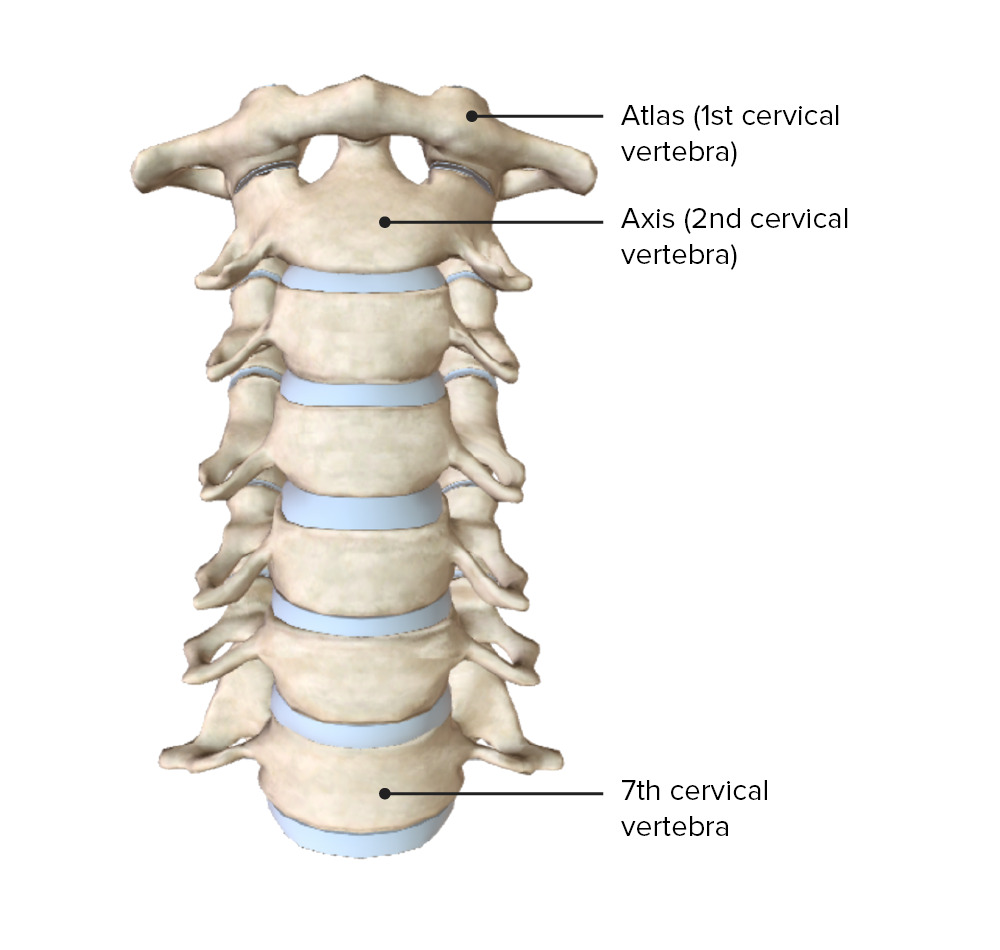Playlist
Show Playlist
Hide Playlist
Lumbar Spine: Paraspinal Muscles
-
Slides Osteopathic Diagnosis of the Lumbar Region.pdf
-
Download Lecture Overview
00:01 Lumbar spine has many muscles - superficial to deep. 00:05 The erector spinae muscles, medial to lateral include the spinalis, longissimus and iliocostalis. 00:12 You have the multifidus and rotator ones that are deeper which contol more fine motor motion in the lumbar spine. 00:21 And then you could have any spasm in this region. 00:25 Tightness of these muscles can lead to back pain, could cause asymmetries, can cause more of a side bending to one side to the other can lead to and contribute to type I scoliotic curves. 00:38 The quadratus lumborum is an important muscle that attaches to the 12th rib along the vertebral column in the lumbar spine and then to iliac crest. 00:46 Because of it's attachment to the 12th rib, it actually helps to fix the 12th rib and stabilize the postural aspect of the diaphragm with breating. 00:55 If the quadratus is spasmed, that could potentially cause a side bending to that side. 01:00 It could also lead to low back pain. 01:02 A spasm of the quadratus lumborum could also cause a dysfunction of the 12th rib which then could result in issues with the diaphragm. 01:12 The lumbar spine also has considerations with the abdominal muscles. 01:17 The abdominal muscles helps to make the cylinder around our core. 01:22 And so, our abdominal muscles help to support our abdominal organs and pelvic organs from falling forward. 01:29 Falling forward of the organs is also called ptosis. 01:32 So, the rectus abdominis, external and internal obliques, the transversalis all work together to try to keep this core tight, the cylinder that wraps around the spine. 01:42 If you do have weakness or ptosis you could lead to decreased stability, increased lumbar lordosis and have more issues with back problems, back pain and joint degenerations in the lumbar spine. 01:57 The iliopsoas muscles are important muscle to consider when looking at lower back pain. 02:03 The iliopsoas is composed of two different muscles. 02:06 The psoas muscle which originates from L1 to L5 along the anterior portion of the bodies and then comes down and attaches to the lesser trochanter in the femur. 02:16 And the iliacus which originates along the pelvis and comes down and also inserts along the psoas tendon. 02:23 So these 2 combined, help to flex the hip and what happens with prolonged sitting or if you're stuck in a crouched, crawling position for a long time, these muscles could become hypertonic, they could become shortened. 02:38 And when you have a sudden stretch like getting up too quickly, these muscles could contract, forcing you to flex forward. 02:46 And so, clinically if you see a patient that is spasmed on one side and flexed forward, having a little bit of like a limping gait, unable to straigten up fully what they say that when they try to lay down flat that their back hurts more, this would point more to a potential psoas syndrome Where the psoas muscle is contracted and irritated. 03:07 Another consideration sometimes with kidney stones, the passing of the kidney stones, stone passing through the ureter, if there's ureter irritation because of the proximity of the kidney and the ureters to the psoas muscle, sometimes you could have that reflex spasm due to the inflammation in the region. 03:26 Range of motion assessment in the lumbar spine is really combined thoracolumbar spine. 03:30 It's hard to isolate only motion at the lumbar spine only. 03:34 So, if we ask our patient to flex forward, that would be forward flexion of the thoracolumbar spine and you're measuring here the amount of forward flexion with a straight line drawn through the lumbar spine. 03:47 So here, you could see that it flexes forward at about 80 degrees. 03:51 We're not accounting for the additional flexion of the thoracic spine here. 03:57 Extension would be about 30 degrees. 03:59 Again, drawing a line straight through the bodies of the lumbar spine. 04:03 And flexion and extension occurs along the saggital plane. 04:07 In the coronal plane, you could have lateral bending or side bending. 04:11 And in the lumbar spine, you limit it to about 35 degrees. 04:14 Remember, the facets are oriented more vertically so it decreases the amount of lateral flexion that you could have. 04:24 Thoracolumbar rotation is about 45 degrees on a transverse plane.
About the Lecture
The lecture Lumbar Spine: Paraspinal Muscles by Sheldon C. Yao, DO is from the course Osteopathic Diagnosis of the Lumbar Region. It contains the following chapters:
- Lumbar Spine – Muscles (Paraspinal)
- Quadratus Lumborum
- Abdominals
- Illiopsoas
- Normal Range of Movement: Thoracolumbar Spine
Included Quiz Questions
Which of the following spinal muscles assists in respiration by "fixing" the 12th rib and helping to stabilize the origin of the diaphragm?
- Quadratus lumborum
- Iliocostalis lumborum
- Longissimus thoracis
- Multifidus
- Semispinalis thoracis
Which of the following lumbar spinal muscles originates from the iliac fossa and lateral sacrum and inserts with the psoas tendon into the lesser trochanter of the femur?
- Iliacus
- Quadratus lumborum
- Psoas
- Multifidus
- Spinalis
In which of the following anatomical planes is lateral or side bending observed?
- Coronal plane
- Horizontal plane
- Transverse plane
- Sagittal plane
- Axial plane
Customer reviews
5,0 of 5 stars
| 5 Stars |
|
5 |
| 4 Stars |
|
0 |
| 3 Stars |
|
0 |
| 2 Stars |
|
0 |
| 1 Star |
|
0 |




